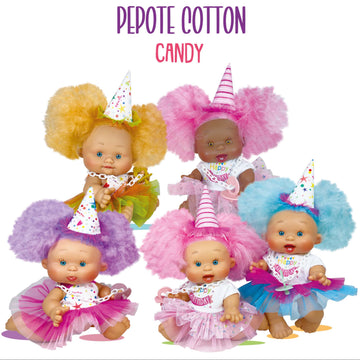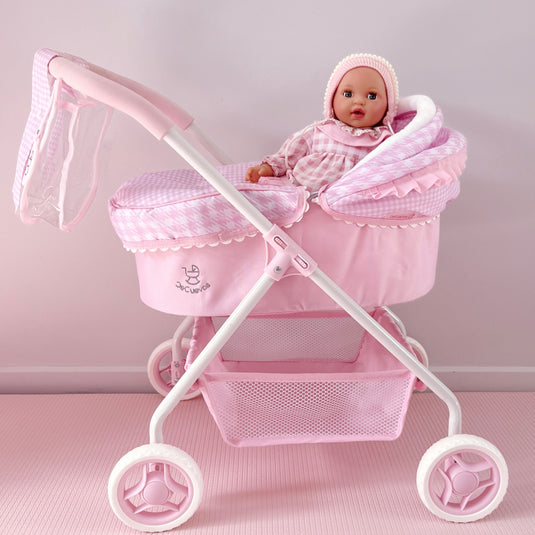3 Easy Facts About Dolls And Accessories Explained
3 Easy Facts About Dolls And Accessories Explained
Blog Article
9 Simple Techniques For Dolls And Accessories
Table of ContentsThe 9-Second Trick For Dolls And AccessoriesDolls And Accessories Fundamentals ExplainedThe Best Guide To Dolls And AccessoriesTop Guidelines Of Dolls And AccessoriesThe 3-Minute Rule for Dolls And AccessoriesThe Ultimate Guide To Dolls And AccessoriesThe Facts About Dolls And Accessories Uncovered
When dolls are consisted of in group play, kids practice waiting, sharing, and paying attention to others' ideas. Whether they're pretending to be a moms and dad, brother or sister, or buddy, youngsters find out how partnerships workhow to support others, fix arguments, and treatment for somebody else. These early role-play experiences become the foundation for healthy relationships and relationships later on in life.Repeating calming regimens with a doll (feeding, rocking, placing to bed) can aid youngsters really feel tranquil and safe and secure. Taking treatment of a doll can make a kid really feel qualified and positive.
The 3-Minute Rule for Dolls And Accessories
When kids see dolls that show their race, heritage, and society, it reinforces a positive sense of identification. Dolls also introduce youngsters to cultures outside their own, building respectful inquisitiveness and compassion for others.
As Dr. Karyn Purvis, a leader in child development and trauma-informed care, as soon as claimed: This powerful quote highlights just how play isn't just funit's exactly how kids discover best. The mind cords itself via rep. Yet when a child is engaged, joyful, and emotionally linked to an activitylike doll playthe brain enhances those links faster and more meaningfully.
Not known Details About Dolls And Accessories

Young boys require compassion, kindness, and creative imagination tooand doll play uses that. Dolls are usually a child's very first "close friend," assisting them exercise partnerships, develop interaction skills, and feel comforted.
Dolls And Accessories Can Be Fun For Everyone
Through dolls that matter. Samantha Ong Samantha Ong is the creator of Joeydolls, a Canadian-based toy brand on an objective to celebrate Eastern cultures through joyful, comprehensive play. Motivated by her own experiences expanding up without cultural depiction, Samantha creates dolls that help children really feel happy of who they are while sparking interest and empathy in others.
Playing with dolls encourages kids to talk even more about others' thoughts and emotions, a study has located. The research study suggests that playing fictional video games with dolls can assist kids create social abilities, concept of mind and empathy.
The 10-Minute Rule for Dolls And Accessories
They were likewise most likely to attend to the dolls in the second person, speaking with them straight, whereas the personalities on the computer display they had a tendency to describe in the 3rd person. No difference was observed between children and girls."Interior state language can suggest that a youngster is believing about various other individuals's ideas and emotions while having fun with dolls," said Gerson.
Which they see language use in this respect is good confirmation of the hypothesis."Mardell included that the findings should certainly relate to any kind of sort of role-play plaything, as opposed to specifying to Barbies. "I 'd take a broader sight of what a doll is," he claimed." [Maybe] any kind of things that the kid can invest a sense of other into a packed pet, a stove mitt that talks with them, or also an imaginary friend."Children commonly start to reveal signs of internal state language around the age of 4.
Not known Facts About Dolls And Accessories
"It comes to be crucial for making and maintaining relationships, and just how they pick up from their teachers, and moms and dads."The study also located that the youngsters had actually increased mind activity in the posterior premium temporal sulcus (pSTS) region when they spoke as though their dolls had thoughts and sensations. The pSTS area is believed to be involved in the growth of social and psychological processing skills.
Childhood is not a fixed life phase; indeed, the meaning, meaning and understanding of childhood years this contact form are all subject to adjustment. By the 19th century among the most extensive changes was the importance put on permitting youngsters to experience "the care free pleasures" of youth with playtime tasks. Play was now thought about to be an important element of an excellent childhood years.
In order to totally recognize the significance of play, one should likewise understand the value of the doll. Nonetheless, dolls are a lot more than playthings developed to delight young girls. Throughout the 19th century correct playtime activities were selected to advertise intellectual, physical or psychological advancement. Dolls were particularly prominent due to the fact that they were thought to promote and support womanly qualities such as kindness, caring and empathy.
The 4-Minute Rule for Dolls And Accessories

It is only with archaeological investigations that researchers can want to discover and document the complete series of playtime experiences. Chronicling these experiences, and specifically the role of dolls, is crucial for offering a more full photo of youth during the 19th century. Alarcn, Sara E - baby dolls., "Youngster's Play: The Function of Dolls in 19th Century Childhood" (2007 )
Report this page